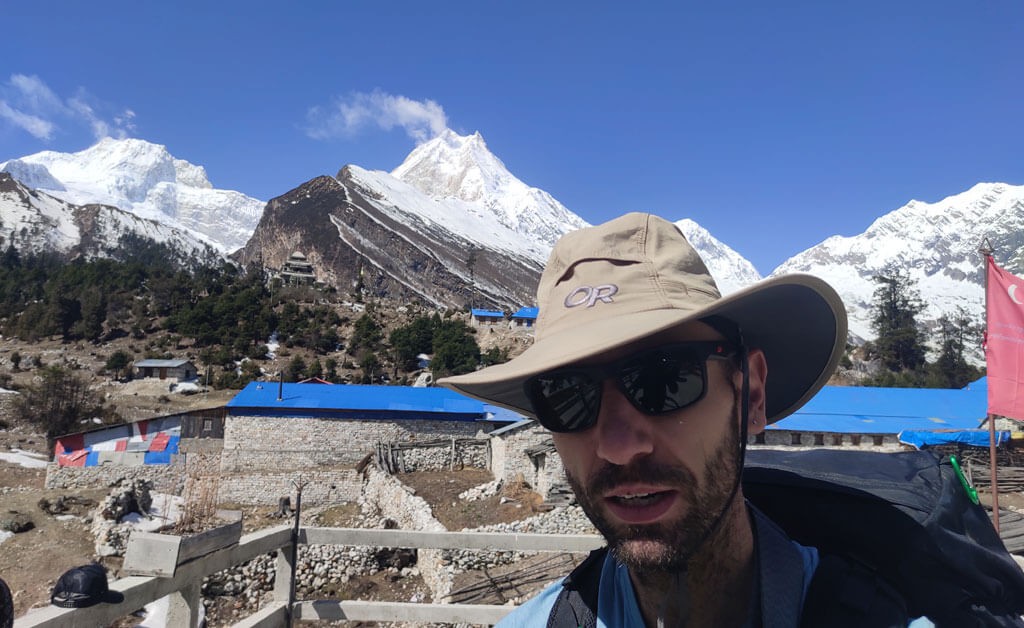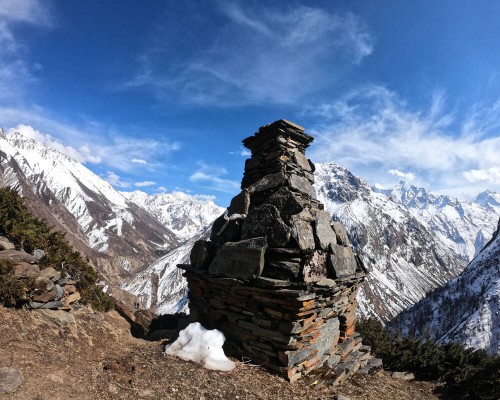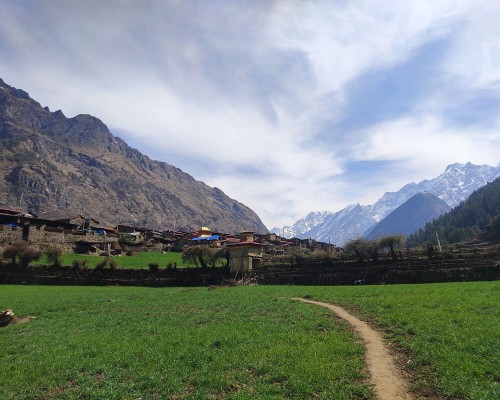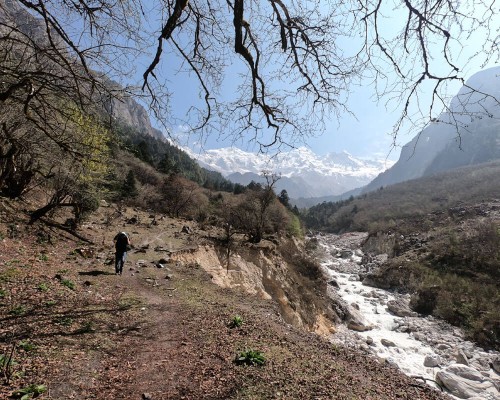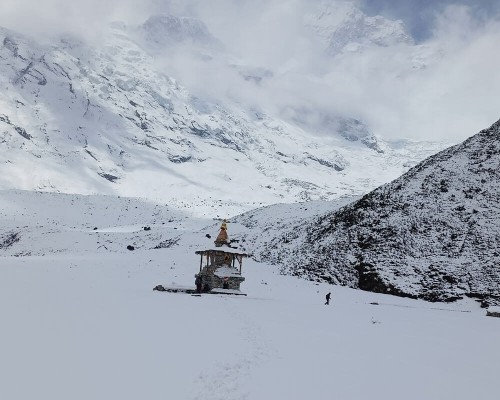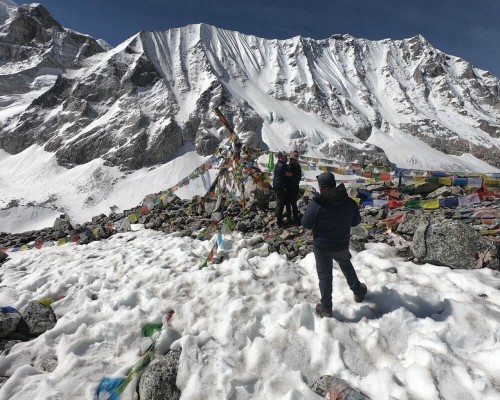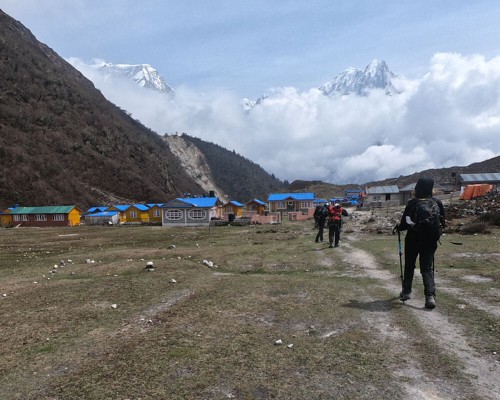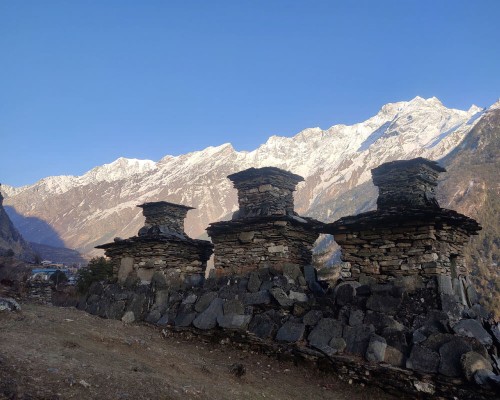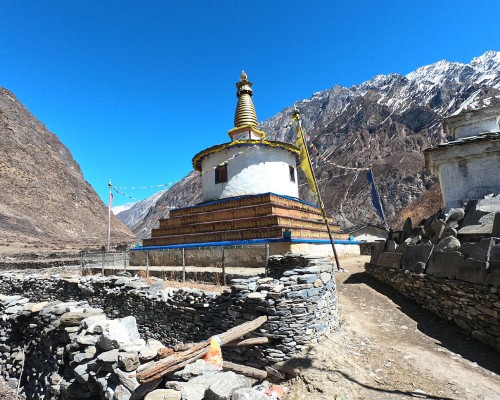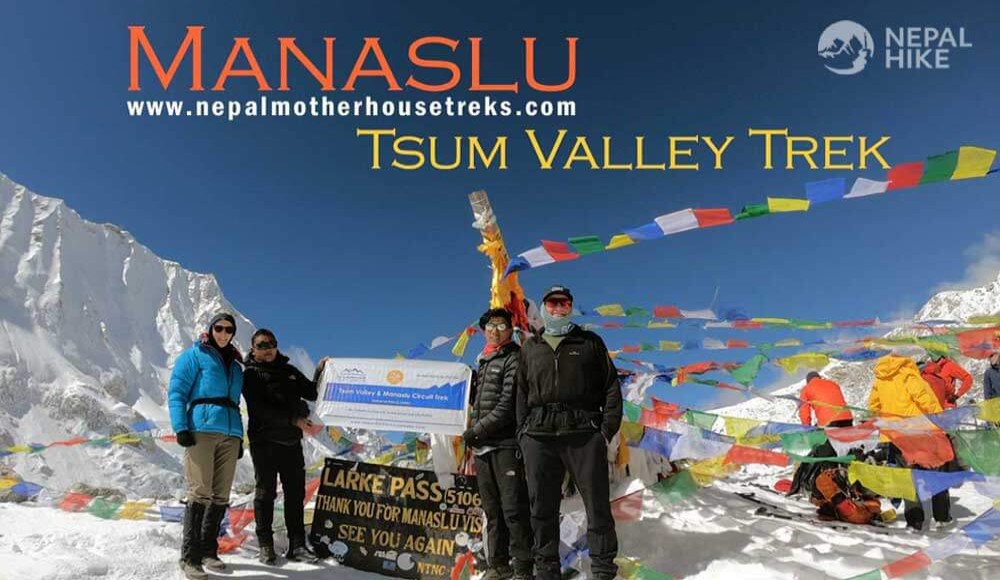The Manaslu Circuit Trek and the Tsum Valley Trek are two popular trekking routes in the Himalayas of Nepal.
The Manaslu Circuit Trek is a challenging trek that takes you around the eighth-highest mountain in the world, Mount Manaslu (8,163 meters). The trek starts in the town of Machhakhola and goes through remote villages, a high mountain pass, Larkya La pass (5,160 m), and stunning landscapes. You will need a special permit to trek in this region, as it is a restricted area.
The Tsum Valley Trek is a relatively new trekking route that takes you through the culturally rich Tsum Valley, which is located in the northern part of the Gorkha district. The trek starts in the town of Arughat and goes through ancient monasteries, remote villages, and beautiful landscapes. The Tsum Valley is known for its unique culture and tradition, which is influenced by Tibetan Buddhism.
Both of these treks are challenging, and you will need to be physically fit and mentally prepared for the trek. However, the stunning views, rich culture, and unique experiences make them well worth the effort. It is recommended that you go with a licensed trekking company and guide to ensure your safety and enjoyment during the trek.
Nepal Mother House Treks provides experienced local guides and other staff according to your requirements and schedule. This trek is recommended only for highly qualified and adventurous people who love to test adventure travel at the foot of the Himalayas. Why don't you explore before other trekkers?
**Note: Nowadays the Jeep or Bus goes to Machhakhola, you can drive on the same day after driving from Kathmandu to Arughat Bazaar. Likewise, at the end of the Manaslu Circuit trip, there is transport available at Dharapani. You can drive to Kathmandu via Besisahar in a single day.
Accommodation in Manaslu Tsum Valley Trek
Accommodation options on the Manaslu Tsum Valley Trek are basic, and you should not expect luxury amenities. However, you can expect a comfortable and cozy stay in the teahouses or lodges along the trail.
The teahouses or lodges along the Manaslu Circuit Trek and Tsum Valley Trek are mostly owned by the locals, and they offer basic accommodation and food. The teahouses or lodges have shared rooms with twin beds, pillows, and blankets. You will need to bring your sleeping bag or rent one from the lodge. The teahouses or lodges also have communal dining areas where you can enjoy your meals and interact with other trekkers.
It is essential to note that the higher you go, the more basic the accommodation becomes. Some of the teahouses or lodges do not have hot showers or electricity, and the toilets are usually squat toilets.
In terms of food, most of the teahouses or lodges offer a variety of Nepalese and Western dishes. The food is generally safe and nutritious, and the lodges offer a chance to try local delicacies. It is recommended to drink boiled or treated water to avoid getting sick.
Overall, the accommodation on both the Manaslu Tsum Valley Trek is basic, but it offers a unique and authentic experience of trekking in the Himalayas.
Food in Manaslu Tsum Valley Trek
Food on the Manaslu Tsum Valley Trek is mainly served in teahouses or lodges along the trail. The food options are usually simple, but nutritious, and a mix of Nepalese and Western dishes are available. Here are some of the common food items you can expect to find:
Dal Bhat: A staple dish in Nepal, it consists of steamed rice, lentil soup (dal), and vegetable curry (Tarkari). It is served with pickles, papad, and sometimes, meat curry.
Noodles or Pasta: Noodles or pasta dishes are also common on the trek, and they are often served with vegetables, eggs, or meat.
Momos: These are Nepalese dumplings, filled with vegetables or meat, and steamed or fried. They are a popular snack or meal option on the trek.
Porridge or Pancakes: These are usually served for breakfast, along with tea or coffee.
Snacks: Snacks such as biscuits, chocolate, and energy bars are available at the teahouses or lodges.
It is important to note that the higher you go, the more limited the food options become, and the cost of food increases. It is also recommended to avoid meat dishes unless you are sure they have been properly cooked.
It is advisable to carry some snacks and energy bars with you for the trek, as they can come in handy when you need a quick boost of energy. Additionally, it is essential to drink plenty of water to avoid dehydration. It is recommended to drink boiled or treated water to prevent getting sick.
Trekking permits for the Manaslu Tsum Valley Trek
To trek in the Manaslu Tsum Valley regions, trekkers are required to obtain the following permits:
Manaslu Restricted Area Permit (MRAP): The Manaslu Restricted Area Permit is a special permit required to trek in the Manaslu region. It costs around USD 70 to USD 100 per week from September to November, depending on the season.
Annapurna Conservation Area Permit (ACAP): The Annapurna Conservation Area Permit is required to trek through the Annapurna Conservation Area, which is part of the Manaslu Circuit Trek. The permit costs around USD 30 or the equivalent of NPR 3,000.
Manaslu Conservation Area Permit (MCAP): The Manaslu Conservation Area Permit is required to trek through the Manaslu Conservation Area, which is part of the Manaslu Circuit Trek. The permit costs NPR 3,000 per person.
Tsum Valley Restricted Area Permit (TSAP): The Tsum Valley Restricted Area Permit is required to trek in the Tsum Valley region. It costs around USD 30 to USD 40 per week, depending on the season.
All these permits can be obtained from the Department of Immigration in Kathmandu or a registered trekking agency in Nepal. It is important to note that the permits are not issued to individual trekkers and must be obtained through a registered trekking agency or guide.
In addition to the permits, trekkers must also carry their passports, two passport-sized photos, and a copy of their travel insurance policy that covers emergency medical evacuation. It is important to obtain the necessary permits before starting the trek to avoid any issues during the trek.
Manaslu Circuit Trek with Tsum Valley Best Time
The best time to trek the Manaslu Circuit Trek with Tsum Valley is during the spring (March to May) and autumn (September to December) seasons, when the weather is favorable and the skies are clear. The trekking routes are accessible during these months, and the views of the mountains are spectacular.
Spring (March to May) is the season of blooming rhododendrons and other wildflowers, making the trek an incredible sight to behold. The temperatures are mild, and the weather is generally stable, making it an ideal time to trek. However, the downside of trekking in the spring season is that it can be quite crowded.
Autumn (September to November) is the peak trekking season in Nepal, and the Manaslu Circuit and Tsum Valley are no exception. During this time, the skies are clear, and the temperatures are mild. The views of the mountains are stunning, making it an ideal time to trek. However, the downside of trekking in autumn is that the trails can be crowded and the accommodation options may be limited.
Winter (December to February) can be challenging for trekking as the temperatures are very cold and the trails may be covered in snow. The views of the snow-capped mountains are breathtaking, but the trek can be difficult and treacherous due to snow and ice.
Summer (June to August) is the monsoon season in Nepal, and the Manaslu Circuit and Tsum Valley region can experience heavy rainfall. The trails can be slippery and muddy, and the visibility can be poor, making it difficult to trek. Therefore, it is not recommended to trek during the monsoon season.
The weather of the Manaslu Tsum Valley Trek
The weather in the Manaslu Tsum Valley region can vary depending on the season. Here's a breakdown of what you can expect:
Spring (March to May): The weather during spring is mild, with temperatures ranging from 10°C to 20°C (50°F to 68°F) during the day and dropping to around 0°C (32°F) at night. The skies are generally clear, and the weather is dry, making it an ideal time to trek.
Summer (June to August): The summer months are the monsoon season in Nepal, and the Manaslu Circuit and Tsum Valley regions receive heavy rainfall during this time. The trails can be muddy and slippery, making trekking difficult. Temperatures during this season can range from 15°C to 25°C (59°F to 77°F) during the day and around 5°C to 10°C (41°F to 50°F) at night.
Autumn (September to November): Autumn is the best time to trek in the Manaslu Circuit and Tsum Valley regions. The weather is mild, and the skies are generally clear, making for spectacular views of the mountains. Temperatures during this season can range from 10°C to 20°C (50°F to 68°F) during the day and around 0°C (32°F) at night.
Winter (December to February): Winter in the Manaslu Circuit and Tsum Valley regions can be very cold, with temperatures dropping to as low as -10°C (14°F) at night. The trails may be covered in snow and ice, making trekking difficult. However, the views of the snow-capped mountains can be breathtaking.
It's important to note that the weather can be unpredictable, and it's always advisable to check the weather forecast before embarking on the trek. Additionally, trekkers should always carry appropriate gear and clothing to stay warm and dry in case of sudden weather changes.
Altitude sickness on the Manaslu Tsum Valley Trek
Altitude sickness, also known as acute mountain sickness (AMS), is rare and can occur during the Manaslu Circuit and Tsum Valley Trek due to the beginning trek from a very low level and getting into Larkya La Pass gently gaining elevation. The highest point on the trek is the Larkya La Pass, at an altitude of 5,160 meters. Here are some tips to prevent and manage altitude sickness during the trek:
Acclimatize: Take it slow and give your body time to adjust to the high altitude. Ascend gradually and take rest days to allow your body to acclimatize. It's important to stay hydrated and avoid overexertion.
Recognize symptoms: Symptoms of altitude sickness include headaches, nausea, dizziness, shortness of breath, and loss of appetite. If you experience any of these symptoms, descend to a lower altitude immediately.
Medications: Some medications can help prevent altitude sickness, such as acetazolamide (Diamox). However, it's always best to consult with a doctor before taking any medication.
Oxygen: In severe cases of altitude sickness, oxygen can be used to alleviate symptoms. Portable oxygen tanks are available for rent in Kathmandu.
Be prepared: Always carry warm clothing, appropriate trekking gear, and a first aid kit with altitude sickness medication.
It's important to note that altitude sickness can affect anyone regardless of age, gender, or fitness level. Proper preparation, acclimatization, and recognition of symptoms can help prevent and manage altitude sickness during the Manaslu Circuit and Tsum Valley Trek.
